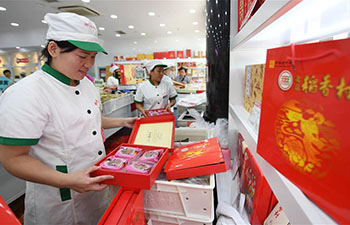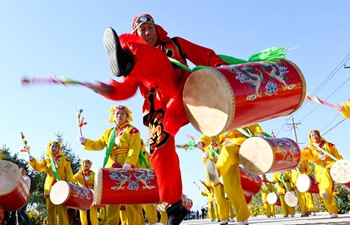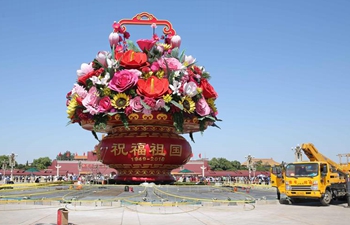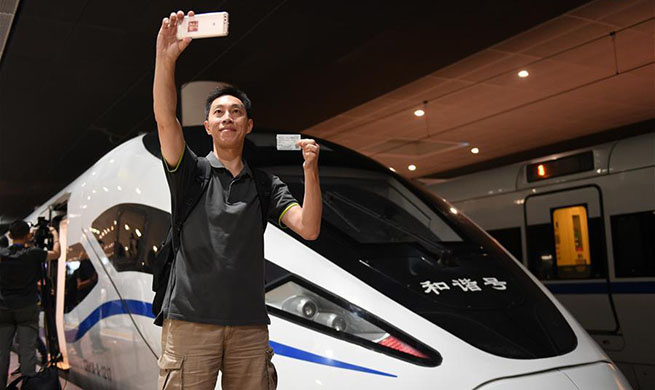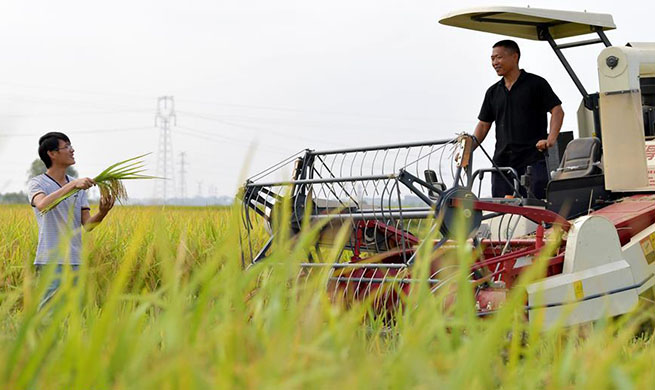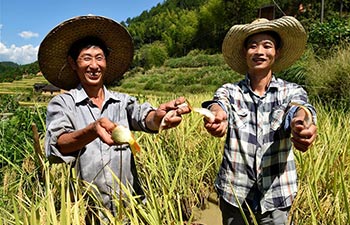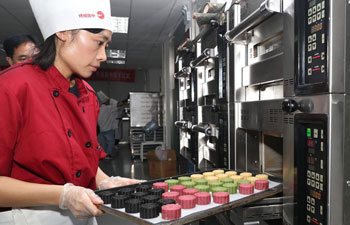by Ronald Ssekandi
MUKONO, Uganda, Sept. 22 (Xinhua) -- As dawn breaks, Martin Seruwo joins hundreds of youths who walk to work at a Chinese-owned Mukono Industrial Park, located in Mukono district about 25km east of the capital Kampala.
Over 1,500 youths are employed at the industrial park that hosts four factories dealing in steel, mattresses and plywood manufacturing.
Uganda just like Ethiopia and some other African countries are looking at the Chinese industrialization model to pull millions of its people out of poverty.
The east African country has mapped out 22 industrial parks to be established in different parts of the country.
At the Mukono Industrial Park, apart from the 1,500 locals directly employed at the factories, over 10,000 people are employed through the products network nationwide.
According to Tian Tang Group, the owner of the park, 46 million U.S. dollars was invested to establish the park up to now.
Liang Kai, vice general manager Tian Tang Group told reporters during a recent tour that apart from the domestic market, some of the products are exported to neighboring Burundi, Rwanda, Democratic Republic of Congo, Kenya and South Sudan.
Goods exported range from mattresses, iron sheets, bars to MDF boards.
About 224 km east of Kampala, another Chinese-owned Industrial Park, Sino-Uganda Industrial Park in Mbale district is being constructed. The construction of the 2.51 square km park was commissioned by Ugandan President Yoweri Museveni in March this year.
It is expected to attract more than 30 investors with a total investment of about 600 million dollars and an annual output value of 1.5 billion dollars, according to the owner, Tian Tang Group.
The park will have an export value of 400 million dollars and will directly employ about 12,000 locals.
Several other Chinese-owned industrial parks have also been established in Uganda over the years, for instance the 220 million dollar Kehong China-Uganda Agricultural Industrial Park. While launching the park in April 2016, Museveni described it as critical in transforming Uganda's economy.
When fully operational, Kehong China-Uganda Agricultural Industrial Park is expected to produce about 600,000 tons of agro-products annually to meet the domestic and regional market demands.
It will also create 25,000 jobs as well as availing opportunities of training for the local people, according to the managers of the park.
Another Chinese-owned park, Liaoshen Industrial Park located in central Uganda is also operational. The 600 million dollars and 2.4 square km park is expected to accommodate 80 industries and employ up to 16,000 people by 2025.
Experts meeting in Uganda last month at a China-Uganda business summit advised the country to focus on the new wave of industrialization that is seeing factories move from China to Africa.
Fred Muhumuza, an economist told Xinhua in a recent interview that as Uganda adopts the industrial park model, it should focus on agro-processing because about 80 percent of its population derives its livelihood from agriculture.
He argued that there is need to focus on economic production since the infrastructure development especially roads has been addressed.
McCool Zhao, an assistant administrator at Tian Tang Group said as the country strives to industrialize, the issue of inadequate power supply must be addressed. He argued that the frequent power blackouts affect their business.
"The challenge is power, without power, we cannot work, it affects our production. The whole park comes to a standstill," Zhao said.
Government has previously argued that as soon as the two Chinese constructed power dams are completed, the shortage of power supply would be solved. Karuma Hydropower Plant is expected to generate 600MW while Isimba will generate 183MW.

